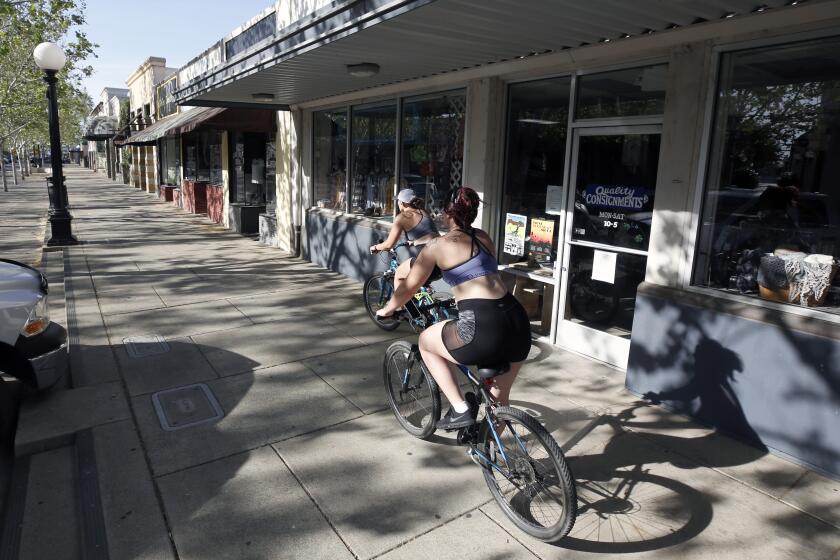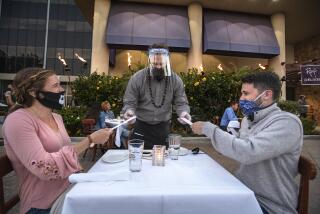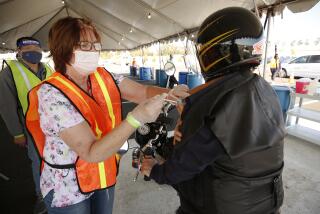Two more California counties to defy stay-at-home order, allowing businesses to open Monday
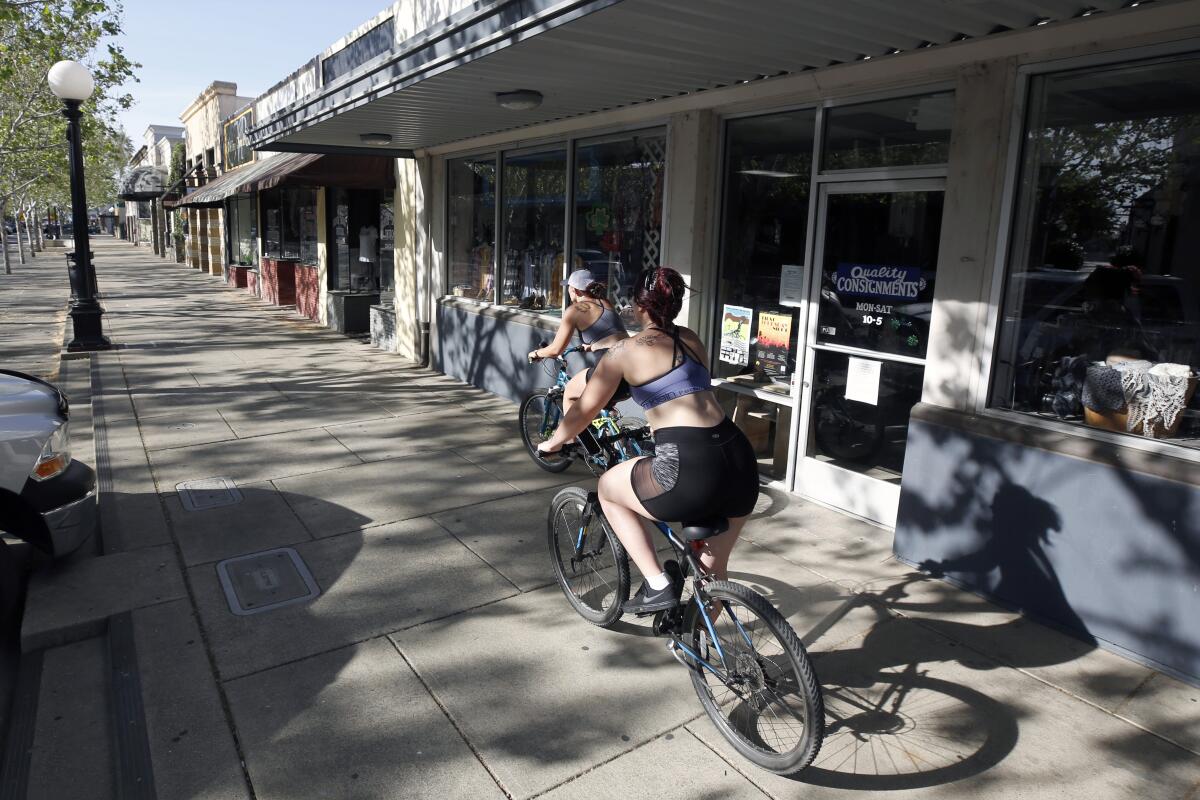
SAN FRANCISCO — Yuba and Sutter counties in Northern California are set to allow many businesses to reopen on Monday in defiance of Gov. Gavin Newsom’s statewide six-week-old stay-at-home order.
The two counties near the state’s capital would join a sparsely populated county in California’s northeastern corner, Modoc County, with fewer than 9,000 residents, that on Friday allowed all businesses, schools and churches to reopen as long as people inside can stay six feet apart.
The move by Yuba and Sutter counties — with a combined population of 171,000 people and just 50 coronavirus cases and three deaths — comes as other California counties on the Central Coast and San Joaquin Valley are demanding to reopen more businesses. On Friday, Newsom said he could make an announcement within days about easing the state’s stay-at-home order.
Newsom’s stay-at-home order, issued March 19, was the first to be issued by any governor in the nation, and experts credit that with helping California see a fraction of deaths of places like New York state, with more than 24,000 deaths. This compares with more than 2,100 fatalities in the Golden State, with 55% of those occurring in Los Angeles County.
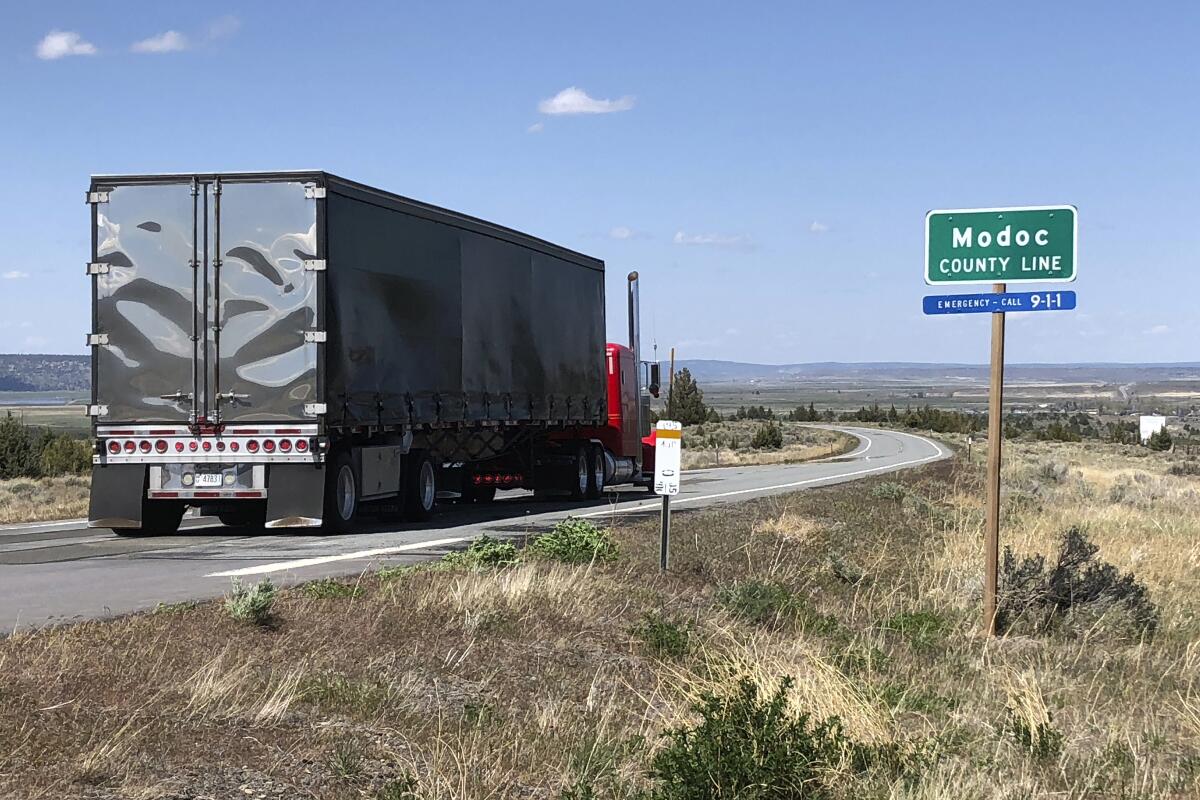
But Newsom said on Friday that he wanted to “be crystal clear” that he understood there were different circumstances in rural areas. “We hear you,” he said. “We’re paying attention to you.”
Dr. Phuong Luu, health officer for Yuba and Sutter counties, on Friday issued new orders that on Monday will allow restaurants, retailers, shopping malls, gyms, fitness studios, salons, spas and tattoo parlors to operate.
Those buildings will need to limit the number of people inside to ensure people can stay six feet from one another and provide hand sanitizer at the entrance.
Six weeks into the governor’s order, pressure has mounted for officials to begin phasing out restrictions. Nineteen counties from Humboldt to Tuolumne have recorded no fatalities from the virus.
But businesses that will remain ordered shut include bars and nightclubs that don’t serve food, museums, movie theaters, bowling alleys, arcades, live performance venues; places of worship and other mass gathering spaces; schools; community centers; beaches and piers; and summer camps and residence halls. All social gatherings of more than 10 people are banned, including parties, funerals and weddings.
Those aged 65 or older or those with underlying medical conditions are ordered to remain at home as much as possible. A new local order also requires wearing face coverings in public when residents can’t keep six feet away from people from other households.
No one with a confirmed diagnosis of the coronavirus has been hospitalized in Yuba or Sutter counties since April 14, according to data released by the California Health and Human Services Agency.
“We cannot wait for a vaccine without seeing extreme economic damage done to our community. The consequences of waiting will be additional health concerns brought on by stress and the very real dilemma for those with limited resources whether to buy life-saving food or life-saving medicines,” Luu said in a statement.
Officials in Sutter and Yuba counties noted that the local health order conflicts with the state’s. In a statement, the counties suggested owners seeking to reopen in accordance with the local order — but not yet allowed to reopen under the state order — “seek their own advice from private legal counsel in considering their options.”
One of California’s least populated counties, Modoc County, which was the first to announce that businesses, schools and churches could reopen as long as people stay six feet away from each other, issued an order that went into effect Friday. Modoc County is one of four California counties that have not reported a single case of coronavirus infection.
Some officials representing Modoc County’s neighbor to the west, Siskiyou County, are hoping to reopen some businesses soon. Siskiyou County, California’s northernmost county on the Interstate 5 corridor and home to Mt. Shasta, has reported five confirmed cases of the coronavirus and no deaths.
The Siskiyou County Board of Supervisors on Tuesday will consider a plan from the county’s health officials on how some businesses might reopen, with new guidelines that still call for seniors aged 65 and older or those with underlying health conditions to stay at home as much as possible, the banning of large gatherings, and ensuring people can stay six feet away from one another.
The plan by Siskiyou County health officials seeks the governor’s approval to open lower-risk businesses as soon as this week — opening retail stores with curbside pickup, allowing factories to resume operation, and opening offices and hotels.
The plan envisions opening up higher-risk businesses tentatively around June 1, such as opening restaurants and bars with inside dining at half capacity. Schools would be able to reopen. Hair and nail salons, gyms, massage parlors, spa services, and tattoo parlors would be able to reopen if they have a plan that limits the number of patrons and allows social distancing to continue.
In this plan, churches and weddings would be allowed, and families could sit together, but people in different households would need to remain at least 6 feet apart from one another. Movie theaters would be allowed to reopen at half capacity, and social distancing would be enforced there. Sports without live audiences would also be able to resume.
Siskiyou County supervisor Michael Kobseff said in an interview Saturday he hoped the governor will have some flexibility in easing the stay-at-home order in areas that have not been hit hard by the coronavirus. Kobseff said the county meets Newsom’s requirements to move ahead to reopening lower-risk businesses except for one — the ability to test widely for the virus, because the county has been unable to get a sufficient supply of tests.
As of Friday, there were no confirmed coronavirus patients in hospitals in Siskiyou County, home to about 44,000 people.
“Hopefully, he’ll have flexibility. It’s not one-size-fits-all,” Kobseff said. “Counties are trying to be responsible in how they react.”
He said residents and business owners don’t know how they’re going to pay their bills and said that while big box stores remain open as essential businesses, many mom-and-pop shops have been shut.
“There’s got to be a balance, and we’re going to try and find, hopefully, a balance that won’t kill our economy but provide public safety as well.”
Some of California’s most populated areas have emphasized caution as they contemplate loosening stay-at-home orders.
Six counties in the San Francisco Bay Area that had implemented a stricter stay-at-home order than Newsom’s have decided to slightly ease some restrictions that went beyond the statewide mandate. On Monday, the region will allow all construction projects to resume, as well as certain outdoor businesses that follow social distancing protocols.
But the counties — San Francisco, Santa Clara, Alameda, Contra Costa, San Mateo and Marin — will otherwise largely retain its existing shelter-in-place order through May 31, affecting 6.6 million people.
Los Angeles County is home to more than half of the COVID-19 hospitalizations and deaths in California, even though it makes up one-quarter of the state’s population. The weekly death toll in L.A. County has exceeded 300 in each of the last three weeks.
The Los Angeles County public health director, Barbara Ferrer, said Friday there will still be a need for local coronavirus public health orders for the county of 10.1 million people after the current version expires May 15 “that help us make sure that we’re opening slowly and carefully so that we avoid any huge outbreaks.”
“Ninety-five percent of us have still not been infected. And until there’s a vaccine, most residents in L.A. County can be infected at any time over the months to come,” Ferrer warned. “Without taking extraordinary measures to reduce our exposures to people who are infected, and to keep our distance as much as possible, we could easily see a big spike in new cases.”
The latest maps and charts on the spread of COVID-19 in Los Angeles County, including cases, deaths, closures and restrictions.
A recent statewide poll from the UC Berkeley Institute of Governmental Studies found that large majorities of California voters want to go slow on ending stay-at-home orders.
By 70% to 30%, the state’s voters say they’re more worried that shelter-in-place orders will end too soon, causing the illness to spread more, than they are that such orders will continue for too long and damage the economy. Nearly 7 in 10 voters fear the possibility of getting sick with COVID-19, the disease caused by the coronavirus.
The poll found 16% of California voters already reporting that they were unemployed when the survey was taken, April 16-20, and that nearly 4 in 10 expect they may lose their job as a result of the pandemic.
Times staff writers Anita Chabria, John Myers, Phil Willon and David Lauter contributed to this report.
More to Read
Sign up for Essential California
The most important California stories and recommendations in your inbox every morning.
You may occasionally receive promotional content from the Los Angeles Times.
